Best Time for Annapurna Base Camp Trek 7 Days
.jpg)
There are generally two seasons for the best-value Himalayan trekking experience in Nepal: autumn (September to November) and spring (March to May). Both spring and autumn have the most suitable weather conditions: dry trekking trails, lush landscapes, and just astounding views of the Himalayas under a clear sky.
If you are planning to do the Annapurna Base Camp Trek 7 Days to explore the second most popular trekking region in the country, spring and autumn would be the prime seasons to explore the region’s beauty at its peak. Let’s break out some of the major highlights of both these peak seasons.
Annapurna Base Camp Trek in Autumn
Even among the peak seasons, the autumn season is considered the ‘number one’ season for this epic Himalayan adventure in the country. In addition to the enchanting trails brimming with the unique shades of the fall season, the fresh monsoon rain-washed landscapes, clear mountain views, and cultural experiences add excitement to your Himalayan adventure.
The autumn season has the most suitable mild weather conditions perfect for outdoor adventures, averaging around 14°C to 18°C. So, you can expect the morning and evenings to be chill and breezy. If you are planning the trek during the latter part of the autumn, you can expect light snowfalls in the higher regions as the winter season closes in.
Highlights of Annapurna Base Camp Trek 7 Days in Autumn Season
- Mild temperatures that are perfect for outdoor adventures
- Stable climatic conditions and low precipitation
- Crisp and fresh air
- Unobstructed spectacular views of the Himalayan vistas
- Unique vibrant shades of the fall season
- Less crowded trekking routes
- Festive season that celebrates some of the grandest festivals
- Amazing delicacies of the harvest season
Annapurna Base Camp Trek in Spring
Spring is another wonderful time to explore the beauty of the second mainstream trekking region of this charming Himalayan nation. One of the major highlights of doing this Annapurna Base Camp Trek 7 Days in spring is that nature is at its pinnacle during this season. The entire lower trekking region is covered with dotted rhododendron flowers and other wildflowers.
Similarly, the stunning visuals of the different colors of this blooming season offer the most picturesque views of the Himalayan vistas with a fairy-tale-like brimming natural setup. If you are into birdwatching or wildlife photography, then you definitely can’t miss this amazing season when the biodiversity of the region is overflowing with life.
The temperature of the Annapurna region is slightly on the warmer side compared to the autumn and generally averages around 16°C to 22°C. So, you will feel a lot warmer even during the high elevation, gaining points in an alpine environment.
Highlights of Annapurna Base Camp Trek 7 Days in Spring Season
- Warmer climatic conditions that make even your alpine exploration enjoyable
- Stunning visuals of the blooming season
- Clear mountain views across the enchanting landscapes of nature at its peak
- Opportunity to explore the rich biodiversity of the Annapurna Conservation Area
- Stable climatic conditions with mostly clear days
- Increased wildlife activity and an ideal period for migratory birdwatching
- Incredible photography opportunities
- Ideal conditions for outdoor camping
7 Days Annapurna Base Camp Trek Difficulty
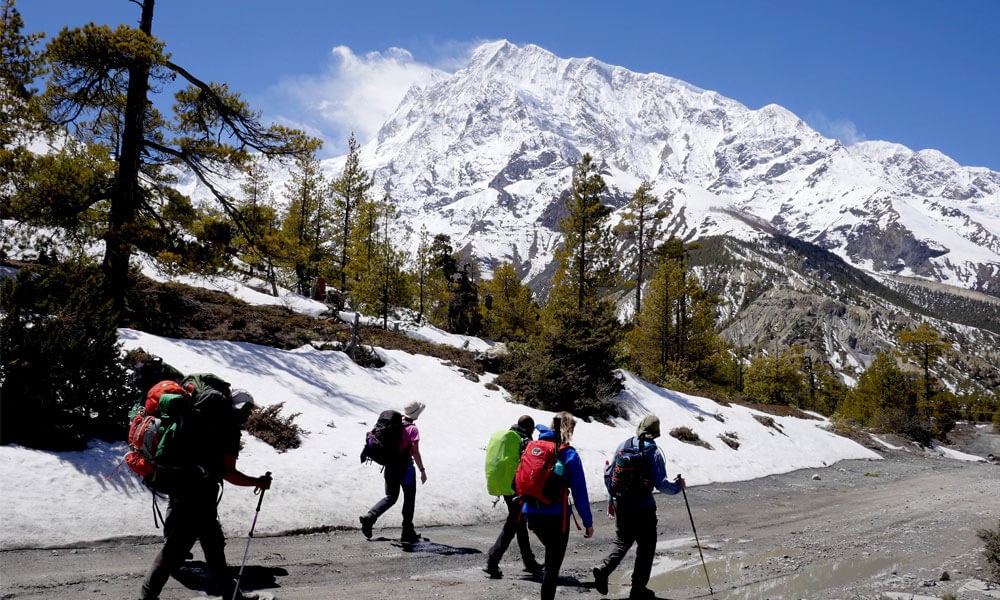
The Annapurna Base Camp Trek 7 Days is an amazing and iconic trekking adventure; it wouldn’t be a stretch to say that if you are a trekking enthusiast, you should definitely try this once-in-a-lifetime experience. Dubbed as the ‘second most popular mainstream trekking route,’ the natural allurements, magnificent views of the Himalayan massifs, vast bio-diversity of the region, religious significance, and the overall cultural experience of this Himalayan exploration make it one of the most fascinating Himalayan trekking route in Nepal.
So, if you are interested in exploring this exciting region and curious about its difficulty level, rest assured, the Annapurna Base Camp Trek has been graded a ‘moderately difficult’ adventure. It means even if you are a newbie who doesn’t have any prior trekking experience, you can complete this remarkable Himalayan exploration.
However, don’t let its moderate grading fool you, Annapurna Base Camp Trek 7 Days is still a Himalayan adventure that explores high-altitude regions, so it’s nothing like the weekend hikes in the backyard. There are several difficulty factors that you have to overcome during your Annapurna Base Camp Trek. Let’s break down some of the challenges of this adventure that you have to prepare yourself for:
Altitude Sickness
High altitude adventures and altitude sickness pretty much go hand-in-hand; with the increase in altitude during your adventure, the risk of altitude sickness also proportionately increases. It is hard for the human body to adapt properly in altitudes above 2,500 meters, so you will have to go through the acclimatization process to settle in properly with the rising altitudes.
In this iconic Himalayan adventure, starting your adventure at Ghandruk (1,940 meters), you will move along high-elevation points like Deurali (3,174 meters), and the highest altitude gain in this trek is at Annapurna Base Camp (4,130 meters). So, you will need to acclimatize properly, stay hydrated, and pay attention to any kind of symptoms related to altitude sickness.
Trekking Distance
The total trekking distance of this Himalayan exploration is about 110 km, so during your trekking days, you will be covering an approximate distance of 6-7 hours of walking on average. So, if you are not prepared for the long hours of walking, pulling this feat with the rising altitude can be a draining task. On top of that, you will be carrying your luggage, so you will have to make an adequate preparation for this demanding exploration.
Remoteness
Even though the Annapurna region is the second most popular Himalayan trekking destination in Nepal, it is still a remote exploration that takes you to the secluded part of the region. The transportation, technological, and other infrastructural developments in the region are pretty much limited. So, you shouldn’t expect the facilities that you receive at top-tier hotels at vacation destinations during your exploration. You should be mentally prepared for the minor inconvenience and shut out from the modern-day technological marvels during remote Himalayan exploration.
Weather
The peak seasons, like spring and autumn, are considered to be an ideal period for this iconic Himalayan exploration due to pleasant climatic and weather conditions. However, if you are planning your adventures for the off-season, like winter (December to February) and monsoon (June to August), then you have to deal with challenging weather factors. For instance, the winter season is known for the snow-covered trails and freezing climatic conditions. Whereas, monsoon is considered a dangerous season due to its slippery trails and looming natural calamities like flooding and landslides.
Is Annapurna Base Camp Trek 7 Days Right for Me?
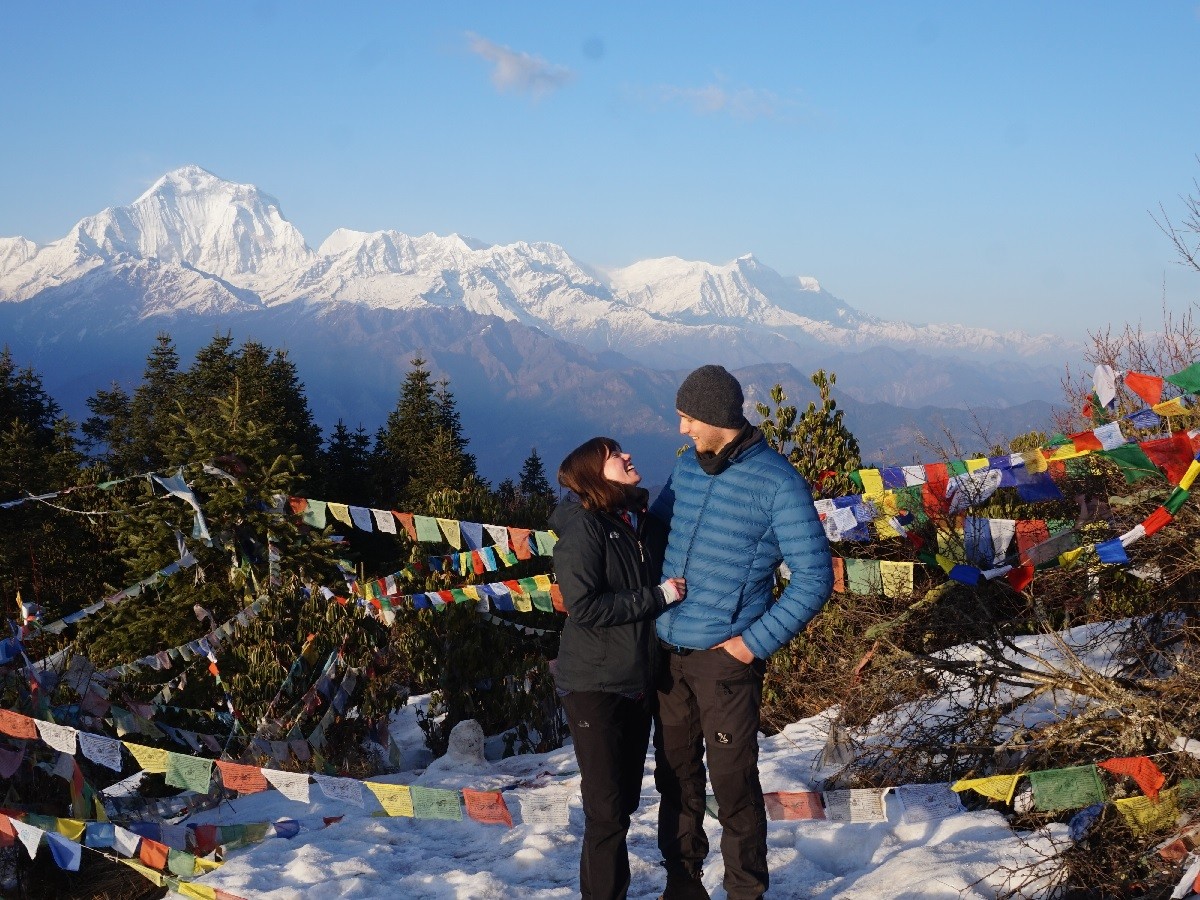
If you are worried about either, you can complete this Himalayan exploration by considering the difficulty level. Don’t panic; you can easily complete this trek with the right amount of preparation. Although the difficulty part shows the hurdles that you can expect during your adventure, it doesn't mean that you cannot complete the Annapurna Base Camp Trek.
The success rate of the Annapurna Base Camp Trek 7 Days is98% to 100%, and in the list of the successful conquerors of this trekking route, there are many elderly trekkers and even children below the age of 14. So, although working on the preparation part may seem like a little bit of a hassle, for the most comfortable experience and enjoyability scale, it is recommended.
With good health conditions and a basic level of physical fitness, anyone can easily complete this exhilarating trekking adventure Consult your physician and guide if you have any kind of medical conditions before considering the trek.
Preparation for Annapurna Base Camp Trek 7 Days
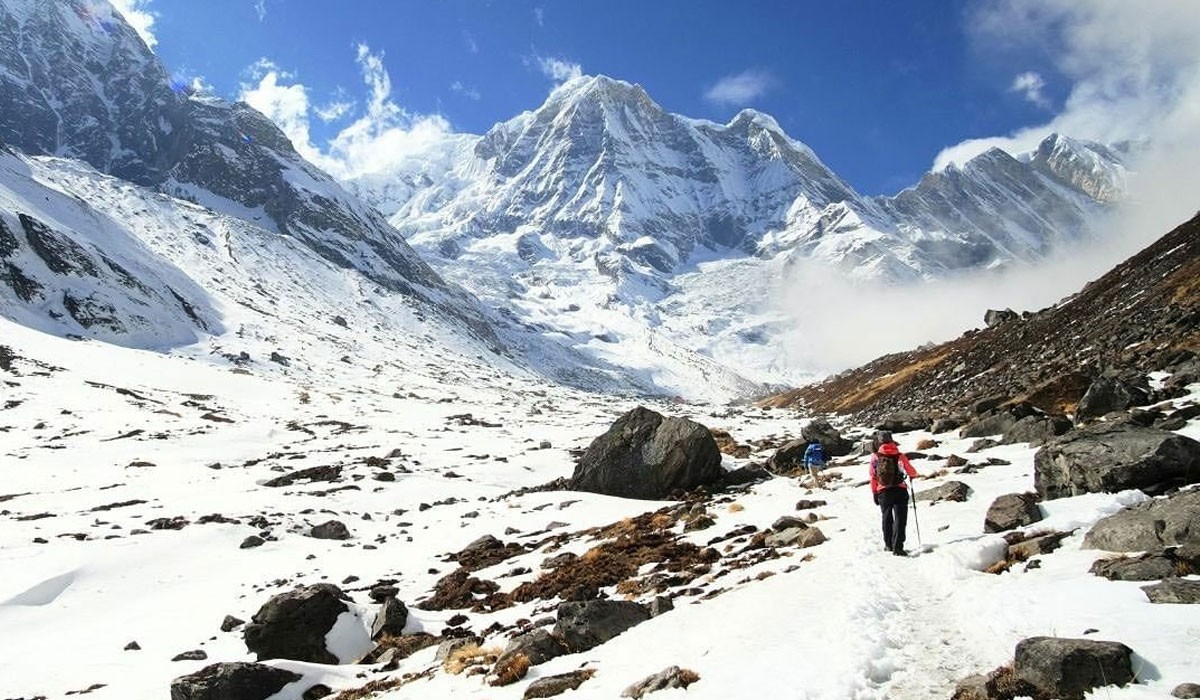
The preparation for your Annapurna Base Camp Trek primarily depends on your physical activity. If you are an athlete or work on a routine basis, you might not need to put in many hours during your preparation period for the Annapurna Base Camp Trek 7 Days. However, if you don’t have any prior high-altitude trekking experience or you are not physically active, then you can do your physical assessment to design an effective training program.
You are recommended to train at least 4-6 weeks prior to your Annapurna Base Camp Trekking adventure. For the most effective preparation, you can also do some practice hikes in the steep landscapes close to you, carrying a backpack with significant weight. This will not only be the perfect stimulation of the experience that you can expect during your actual trek to design and analyze your weak points but also a wonderful opportunity to check the comfort level of your boost and equipment. You are recommended to work on your strength and endurance prospects for a better experience, you can include the following exercises in your training program.
Strength Endurance Exercises
- Pushp up
- Plank
- Pull up
- Lunges
- Squat
- Bicep curl
- Deadlift
- Overhead press
- Dip
- Leg press
- Shoulder press
- Step up
Cardiovascular exercises
- Jogging
- Skipping
- Cycling
- Power walking
- High knees
- Jumping jack
- Swimming
- Rowing
- Burpees
Mental Preparation
Although physical preparation for any kind of demanding adventure is an absolute necessity, mental preparation also plays a vital role in the success of this adventure. Things always don’t go the way you plan to, so it is necessary to be prepared for the hurdles and challenges that you may face during this trek. So, being mentally prepared will not only keep you composed and determined to complete this Himalayan exploration, but you will be able to truly immerse in this experience to a farther extent. Here are some mental preparation tips for this iconic trekking adventure.
- Practice staying calm and composed to properly assess the situation
- Learn to stay positive consistently
- Surround yourself with positive people
- Do meditation
- Practice leaving your comfort zone
- Positive self-talking
- Visualise your movements and journey
- Prepare yourself for minor inconveniences
- Identify your fears and work on them
Food and Accommodation
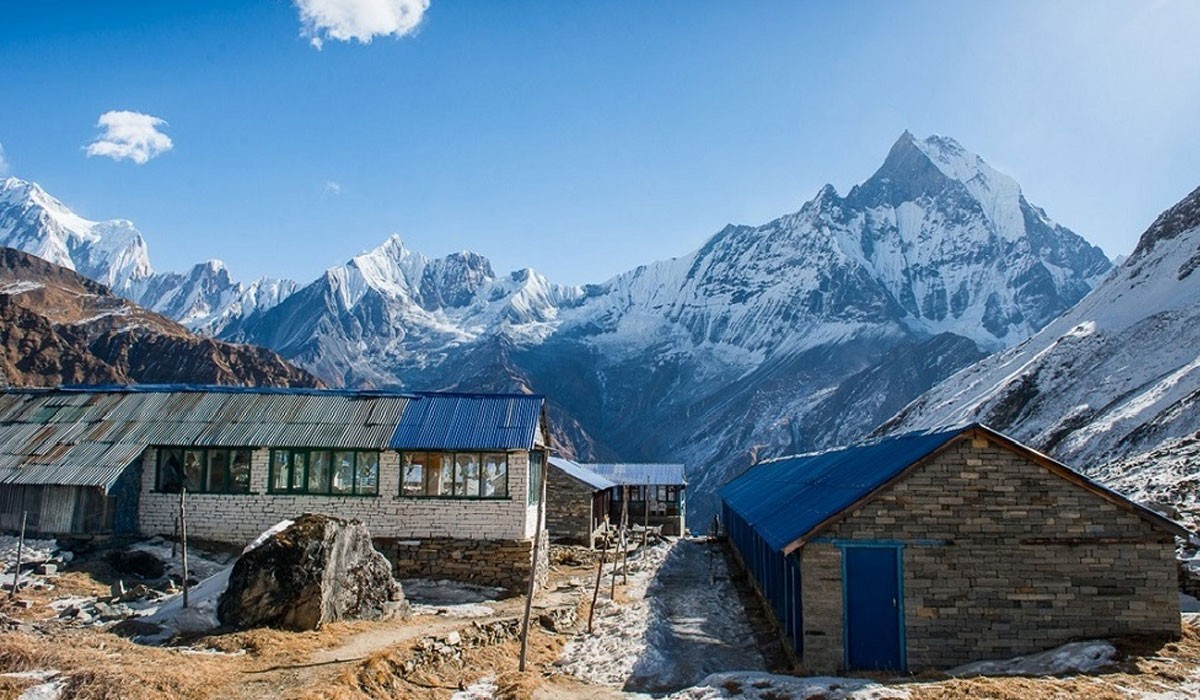
Annapurna region is a mainstream trekking region in Nepal and a well-renowned Himalayan trekking adventure. So, compared to other remote Himalayan explorations, you can expect moderate to luxurious levels of accommodation and lodging facilities during your trekking adventure. In your standard trekking package, you can expect to rest at the dormitory-style rooms at the teahouses along the trail with at least 2-3 beds adjacently lined up.
As for the basic amenities, you will receive a comfortable mattress, a clean pair of sheets, a pillow, and a blanket. Similar to your lodging facilities, the bathrooms are also on a shared basis; some teahouses have attached bathrooms, meanwhile others don’t. There are communal areas like dining halls and resting lobbies that are equipped with heaters. You can also upgrade to the luxurious trekking packages, which add personal touches to your experience.
Food
Cuisine exploration is one of the additional perks of extraordinary Himalayan adventure. Not only will you get the taste of diverse regional dishes, but you will also have the opportunity to relish the Tibetan and Indian culture inspired dishes. Similarly, you can also enjoy some of the starting continental dishes with Nepali touches in this trek. The general food menu at teahouses in the Annapurna region includes the following delicacies.
For Breakfast
- Tea, coffee,
- Eggs
- Bread/toast with jam, honey and butter
- Muesli
- Oats
- Cornflakes
- Pakoda
- Paratha
- Chapati
- Tibetan bread
- Fruits
- Pancake
- Pudding
For Lunch and Dinner
- Dal, bhat, tarkari (lentil soup, steamed rice, vegetables and other side dishes)
- Thakali khana set
- Dhindo gundruk
- Pizza
- Pasta
- Macrons
- Spaghetti
- Sandwich
- Steaks
- Spring roll
- Dumplings/ momo
- Thukpa
- Chowmein
- Rilduk
- Shyaphale
**Note: Vegetarian and vegan options also available at the teahouses/lodges**
Packing Checklist
For a comfortable and enjoyable experience during this classical Himalayan trek, you need to make sure that you are well-packed. You will traverse across different climatic zones in this Himalayan exploration, so you need to pack the right gear and clothes to deal with these climatic zones. Even though you are recommended to pack light for the trek, don’t miss out on the most basic essentials. Here are some recommended packing checklists for this adventure:
Head and Body
- Sun hat, scarf
- Woolen/ knitted hat/ beanie
- Muffler/ bufff
- Insulated/ waterproof gloves
- Long sleeve, short sleeve t-shirts
- Fleece or down jacket
- Insulated vest/ thermal layers
- Waterproof/ windproof jacket
- Waterproof trekking pants
- Hiking shorts
- Fleece/ heavy fur trousers
- Several pairs of underwear
Foot
- Trekking boots (make sure to break in)
- Sports shoes
- Several pairs of socks (moisture-wicking)
- Waterproof gaiters
- Sandals/ crocs or slippers
Personal Care
- Toothbrush and toothpaste
- Sunscreen, body lotion
- Lip balm
- Quick dry towels
- Small mirror
- Nail clippers
- Tissue paper and wet wipes
- Insect repellent spray/ cream
- Prescribed medications
- Portable first-aid kit
Accessories
- Daybpack/ backpack
- Sleep bag (four seasonal recommended)
- Trekking poles
- Binoculars
- Headlamp/ flashlight with extra batteries
- Maps and compass
- Camera
- Power bank, solar chargers
- Universal charging cord
- Thermos/ water bottles
- Pen, journals
- Magazine, books
- Board games, entertainment set
**Note: Make sure to carry enough change converted to the local currency for snacking and shopping for souvenirs. There are no atm machines along the trekking route**
If you're want an extended trek to experience the breathtaking beauty of Annapurna region, we also offer an Annapurna Circuit 12 Days Trek Itinerary, allowing you to immerse yourself in the beauty of the Himalayas in a slightly longer timeframe.
Read also:
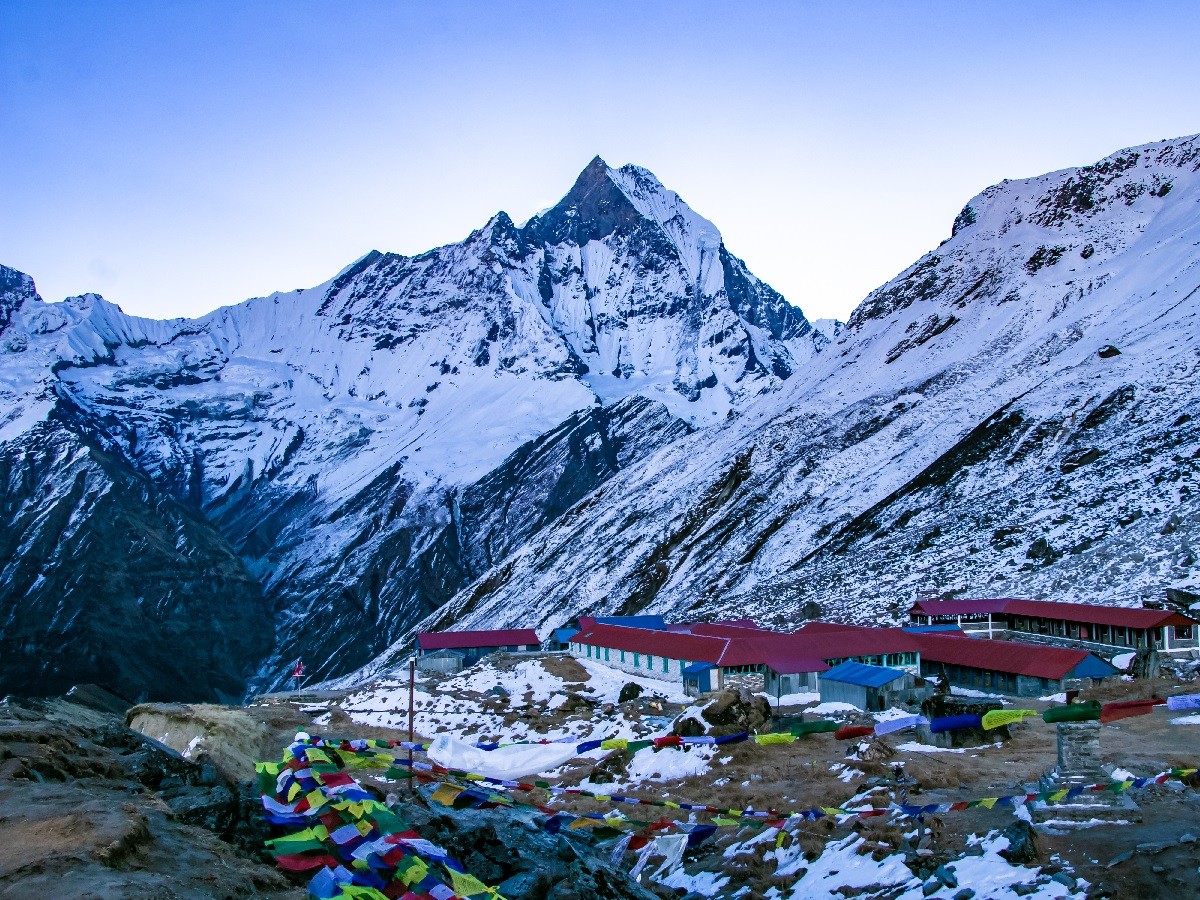


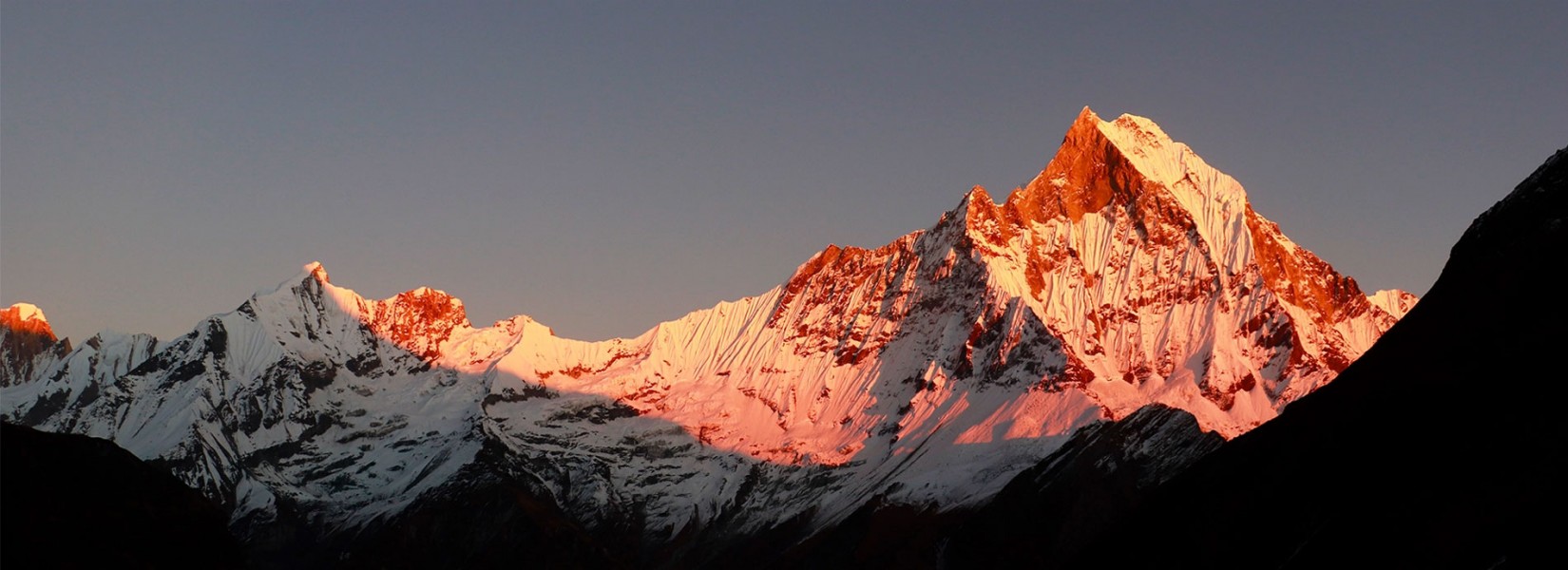
.jpg)







